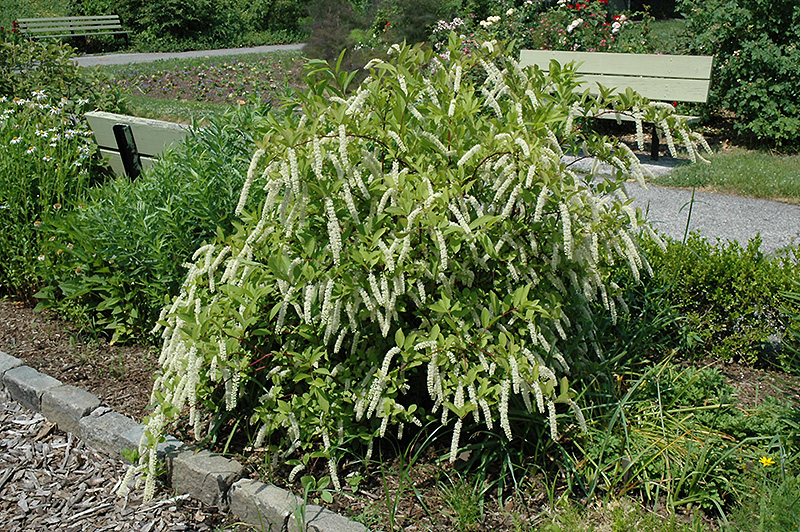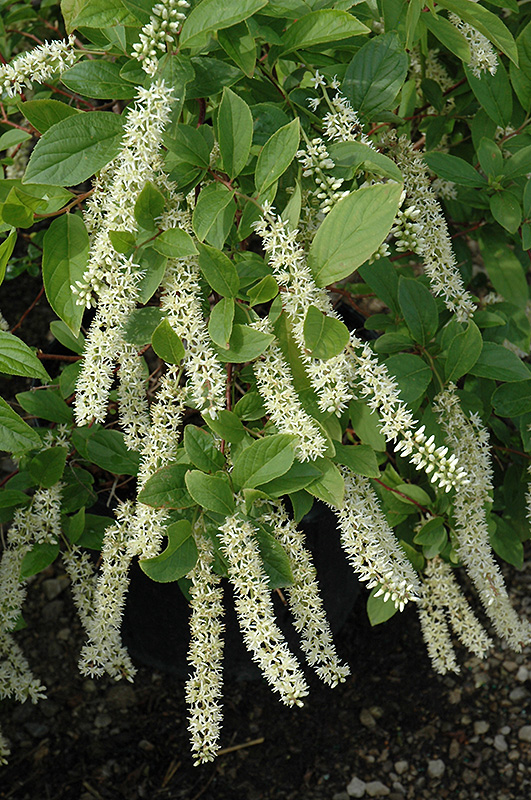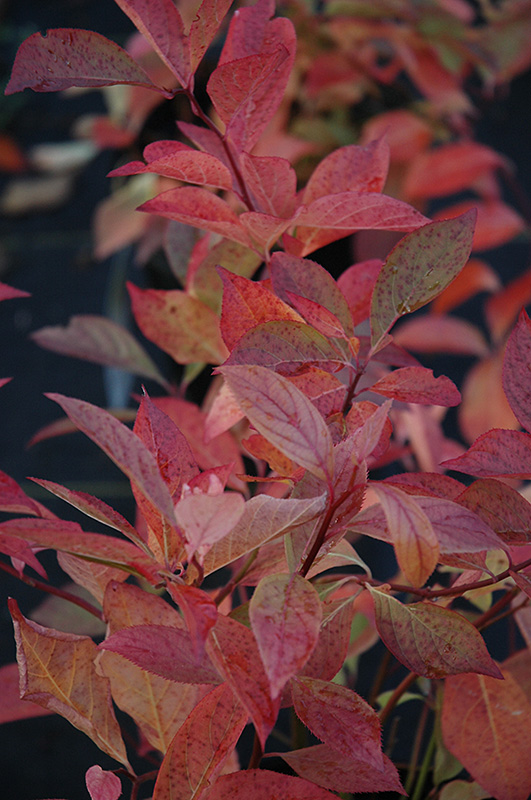Digging deeperPlant Library
Little Henry Virginia Sweetspire
Itea virginica 'Sprich'
Height: 24 inches
Spread: 24 inches
Sunlight:
![]()
Hardiness Zone: 5
Description:
A compact spreading version of this native shrub which features extremely long and narrow panicles of white flowers in early summer, consistently reddish-purple fall color; good for the garden or for naturalizing, spreads to form small colonies
Ornamental Features
Little Henry Virginia Sweetspire has racemes of fragrant white flowers at the ends of the branches in early summer. It has green deciduous foliage. The narrow leaves turn an outstanding burgundy in the fall. The purple stems can be quite attractive.
Landscape Attributes
Little Henry Virginia Sweetspire is a dense deciduous shrub with a ground-hugging habit of growth. Its average texture blends into the landscape, but can be balanced by one or two finer or coarser trees or shrubs for an effective composition.
This shrub will require occasional maintenance and upkeep, and should only be pruned after flowering to avoid removing any of the current season's flowers. Gardeners should be aware of the following characteristic(s) that may warrant special consideration;
- Suckering
Little Henry Virginia Sweetspire is recommended for the following landscape applications;
- General Garden Use
- Naturalizing And Woodland Gardens
Planting & Growing
Little Henry Virginia Sweetspire will grow to be about 24 inches tall at maturity, with a spread of 24 inches. It tends to fill out right to the ground and therefore doesn't necessarily require facer plants in front. It grows at a medium rate, and under ideal conditions can be expected to live for 40 years or more.
This shrub should be grown in a location with partial shade or which is shaded from the hot afternoon sun. It is quite adaptable, prefering to grow in average to wet conditions, and will even tolerate some standing water. It is not particular as to soil type or pH. It is somewhat tolerant of urban pollution. This is a selection of a native North American species.
Note:
Morning sun only. An east or northeast exposure is preferable.
A NetPS Plant Finder tool
This Plant Library is for informational purposes only. We may or may not carry the items listed. During many times of the year, we may carry many more plants in our store than are listed in the Plant Library. Please contact us directly at 303-690-4722 or visit our store for current availability and for assistance.


